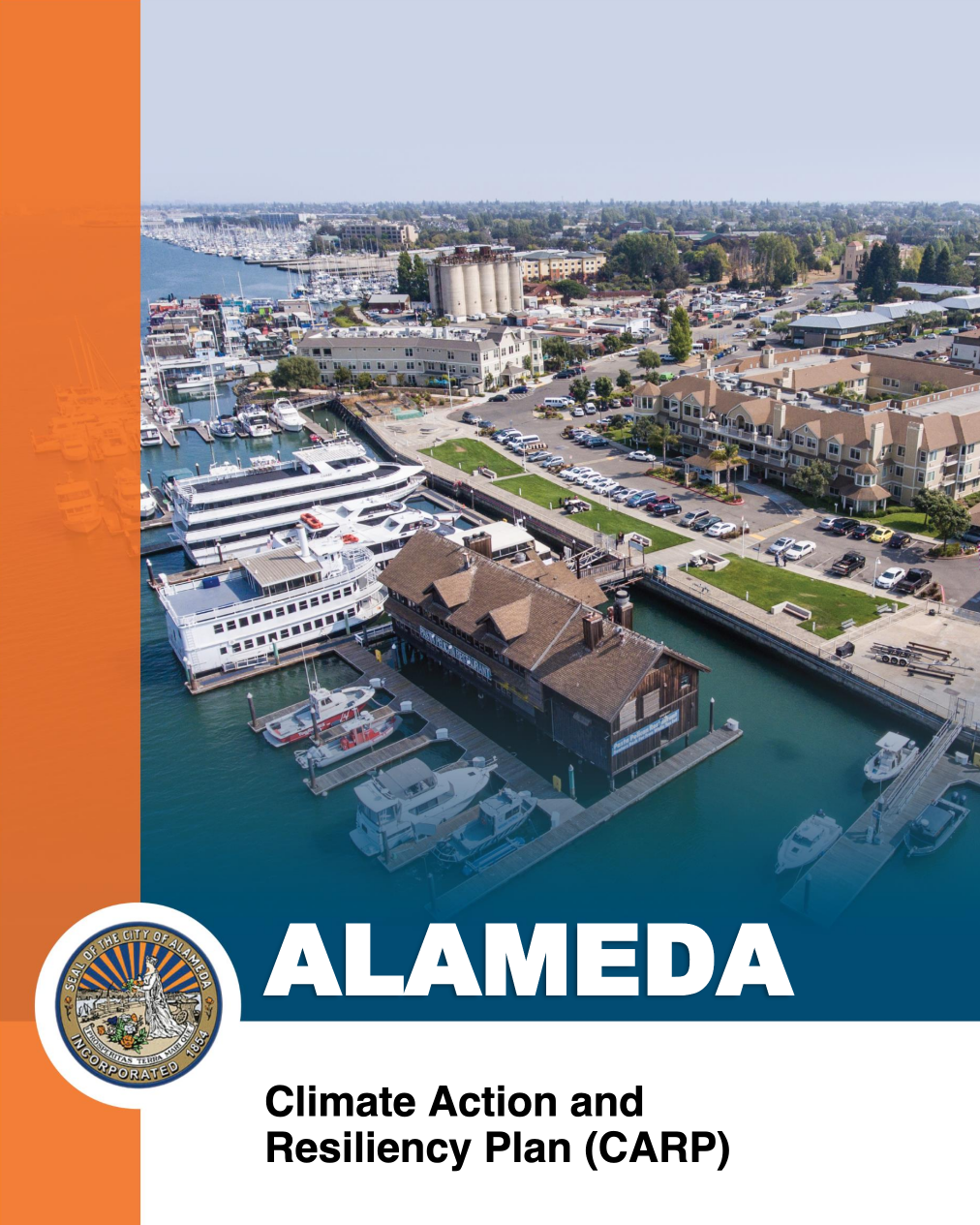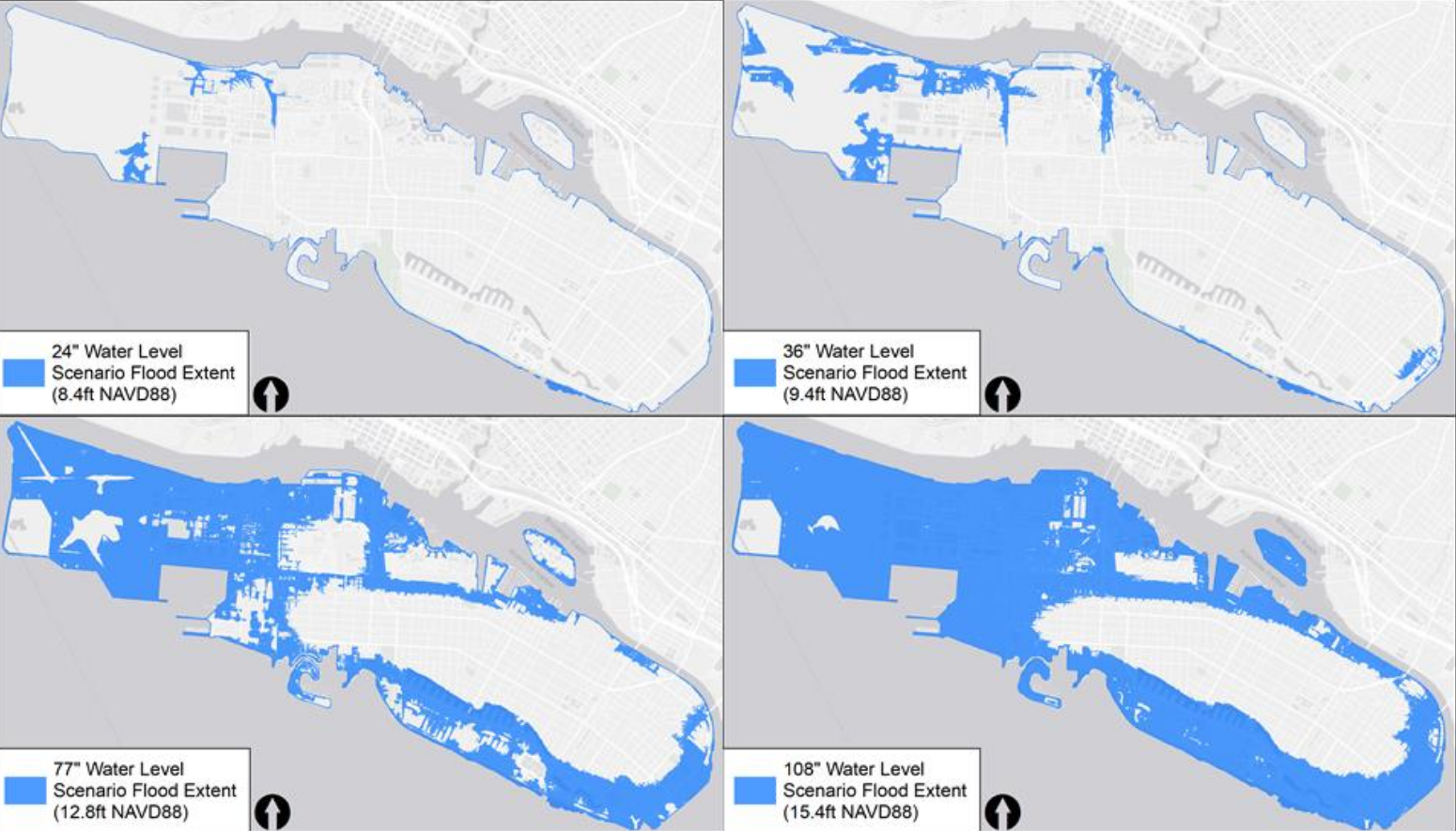By William (Bill) Smith
 This fall the City of Alameda will consider adopting an innovative climate action plan that addresses risks from both climate change and historical social inequities. Alameda’s Climate Action and Resiliency Plan (CARP) includes contributions from a broad cross-section of community organizations that represented businesses, realtors, developers, homeowners, transportation advocates and environmentalists.
This fall the City of Alameda will consider adopting an innovative climate action plan that addresses risks from both climate change and historical social inequities. Alameda’s Climate Action and Resiliency Plan (CARP) includes contributions from a broad cross-section of community organizations that represented businesses, realtors, developers, homeowners, transportation advocates and environmentalists.
The CARP prescribes a climate-safe path that both reduces emissions of GHGs (greenhouse gases) and adapts the city to the impacts of climate change driven by those emissions. These impacts, which the plans shows fall especially hard on socially vulnerable communities, include rising temperatures, liquefaction from earthquakes, wildfire smoke and, most threatening of all, floods from extreme storms and rising seas.
The CARP proposes actions to mitigate the risks to 2,000 homes and vital public assets that could flood today. Ten priority actions proposed for the next five years will protect public assets, including the Webster and Posey tubes that run under the Oakland Estuary to Oakland’s Chinatown, Crown Beach and Bird Sanctuary, and State Route 61 on Doolittle Drive. City staff are already moving to implement the CARP’s recommendation to fund and implement stormwater pipe and pump stations identified in the existing master plan for the stormwater system.
The CARP also lays out a climate safe path for the 10,000 to 20,000 of Alameda’s 30,000 homes that the Union of Concerned Scientists predicts may be subject to chronic flooding by 2100. By then building damage and land loss from sea level rise could have cost residents and businesses around $6.8 billion.
To demonstrate that greenhouse gas emissions can be reduced to levels that will lead to less drastic climate changes, the City set goals for reducing emissions to 50 percent below 2005 levels by 2030 and to 80 percent below by 2050. To offset emissions that it cannot eliminate, the City will plant 3,500 more trees and apply more compost in parks and open areas to draw down carbon already in the atmosphere into soils.
To reach emissions goals, Alameda is one of the first cities in California to identify reduction in consumption of consumer goods by residents as a significant opportunity to reduce its total greenhouse gas emissions. Its Zero Waste Implementation Plan will be updated to encourage residents to adopt a zero waste culture that emphasizes a circular economy that reuses and recycles raw materials to keep them in a constant flow, rather than a linear economy that extracts raw materials and then disposes of them. Residents will fly less, buy less, eat less (especially meat and other animal products), grow more (in gardens) and, when they must, buy durable and second-hand.
Having made an overarching commitment to social equity, the Climate Action and Resiliency Plan prioritized 22 adaptation strategies to protect bus lines serving transit-dependent neighborhoods from overland flood risk. The City’s Social Vulnerability Assessment found socially vulnerable residents without cars throughout the City, especially in neighborhoods near Webster Street and Atlantic Avenue and Lincoln Avenue near Park Street. The CARP also includes plans for shelters to protect socially vulnerable residents from extreme heat and wildfire smoke.
The CARP includes several actions to reduce greenhouse gas emissions from buildings and cars. Its building electrification program proposes ordinances that would require appliances and heaters to convert from gas to electric when existing buildings are substantially expanded. City staff are already preparing ordinances to require all new residential construction to be 100% electric-powered with no gas hookups. The City will strengthen its existing programs to get residents out of cars and into buses and electric cars while making bicycling and walking more attractive for daily commuting and shopping.
After concluding that affordable housing reduces greenhouse gas emissions, the CARP recommends that the City allow more multifamily housing, reduce parking requirements and increase allowable density. It also recommends anti-displacement policies that preserve affordable housing and protect tenants.
For more information on how Alameda is redressing long-standing social inequities with its Climate Action and Resiliency Plan, contact one of the following Alameda Sierra Club members: William Smith (SmithWJA@gmail.com), Richard Bangert (rb94501@gmail.com) or Irene Dieter (id94501@gmail.com).
You can read and download the plan online here.

Image: Maps showing inundation for 24-, 36-, 77-, and 108-inch total water level scenarios.